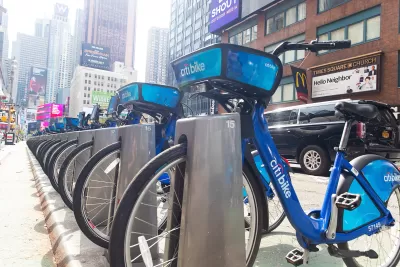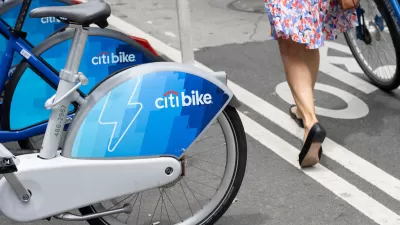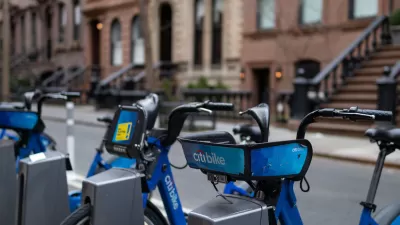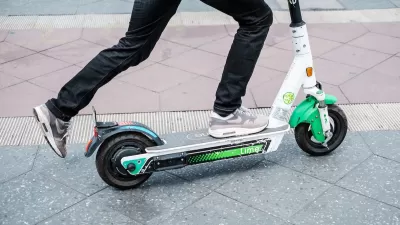The growing popularity of Citi Bike, shared e-scooters, and other small devices signal a need for the city to quickly expand its support of new modes with safe roads, charging infrastructure, and secure parking options in all parts of the city.

“The growth of cycling and emergence of affordable electrified vehicles—from standard and cargo bikes to electric scooters and mopeds to three-wheeled and adaptive bikes—are offering more and more New Yorkers viable alternatives to private cars,” writes John Surico for the Center for an Urban Future. “Citi Bike is seeing nearly 125,000 rides a day. And the East Bronx e-scooter share pilot is a smashing success: more than 1.3 million rides were taken in a year, overwhelmingly by people of color earning less than $50,000 annually.”
This success, Surico argues, points to a need for even more robust micromobility infrastructure across all five of the city’s boroughs, particularly in “less transit-rich” neighborhoods. But the city’s investment in micromobility isn’t keeping up with the demand, Surico says.
Surico explains that post-pandemic mobility patterns reveal a need for reorganized transportation systems. “[T]he city’s century-old radial transit network—built for people to get in and out of Manhattan’s central business district—isn’t designed for a city of neighborhoods and nodes. Creating a stronger live-work environment will require more options for city dwellers to explore their own neighborhoods, visit others nearby, and access commercial corridors and open spaces.”
Surico asserts that “New Yorkers cannot wait another decade for Citi Bike to reach all five boroughs,” and that “To help balance the need for financial sustainability with the demand for equitable access, the city should step in, as other global capitals have done, to ensure that every New Yorker lives within walking distance of a Citi Bike dock in the next three to five years.”
Further, Surico recommends installing secure infrastructure for parking and charging bikes and e-scooters. “Without space at home to safely charge and store, this infrastructure is shut off to huge swaths of the population and makes the expansion of public, shared systems more challenging.”
FULL STORY: EXPANDING MICROMOBILITY ACROSS ALL FIVE BOROUGHS

Alabama: Trump Terminates Settlements for Black Communities Harmed By Raw Sewage
Trump deemed the landmark civil rights agreement “illegal DEI and environmental justice policy.”

Study: Maui’s Plan to Convert Vacation Rentals to Long-Term Housing Could Cause Nearly $1 Billion Economic Loss
The plan would reduce visitor accommodation by 25% resulting in 1,900 jobs lost.

Planetizen Federal Action Tracker
A weekly monitor of how Trump’s orders and actions are impacting planners and planning in America.

Wind Energy on the Rise Despite Federal Policy Reversal
The Trump administration is revoking federal support for renewable energy, but demand for new projects continues unabated.

Passengers Flock to Caltrain After Electrification
The new electric trains are running faster and more reliably, leading to strong ridership growth on the Bay Area rail system.

Texas Churches Rally Behind ‘Yes in God’s Back Yard’ Legislation
Religious leaders want the state to reduce zoning regulations to streamline leasing church-owned land to housing developers.
Urban Design for Planners 1: Software Tools
This six-course series explores essential urban design concepts using open source software and equips planners with the tools they need to participate fully in the urban design process.
Planning for Universal Design
Learn the tools for implementing Universal Design in planning regulations.
Caltrans
Smith Gee Studio
Institute for Housing and Urban Development Studies (IHS)
City of Grandview
Harvard GSD Executive Education
Toledo-Lucas County Plan Commissions
Salt Lake City
NYU Wagner Graduate School of Public Service





























